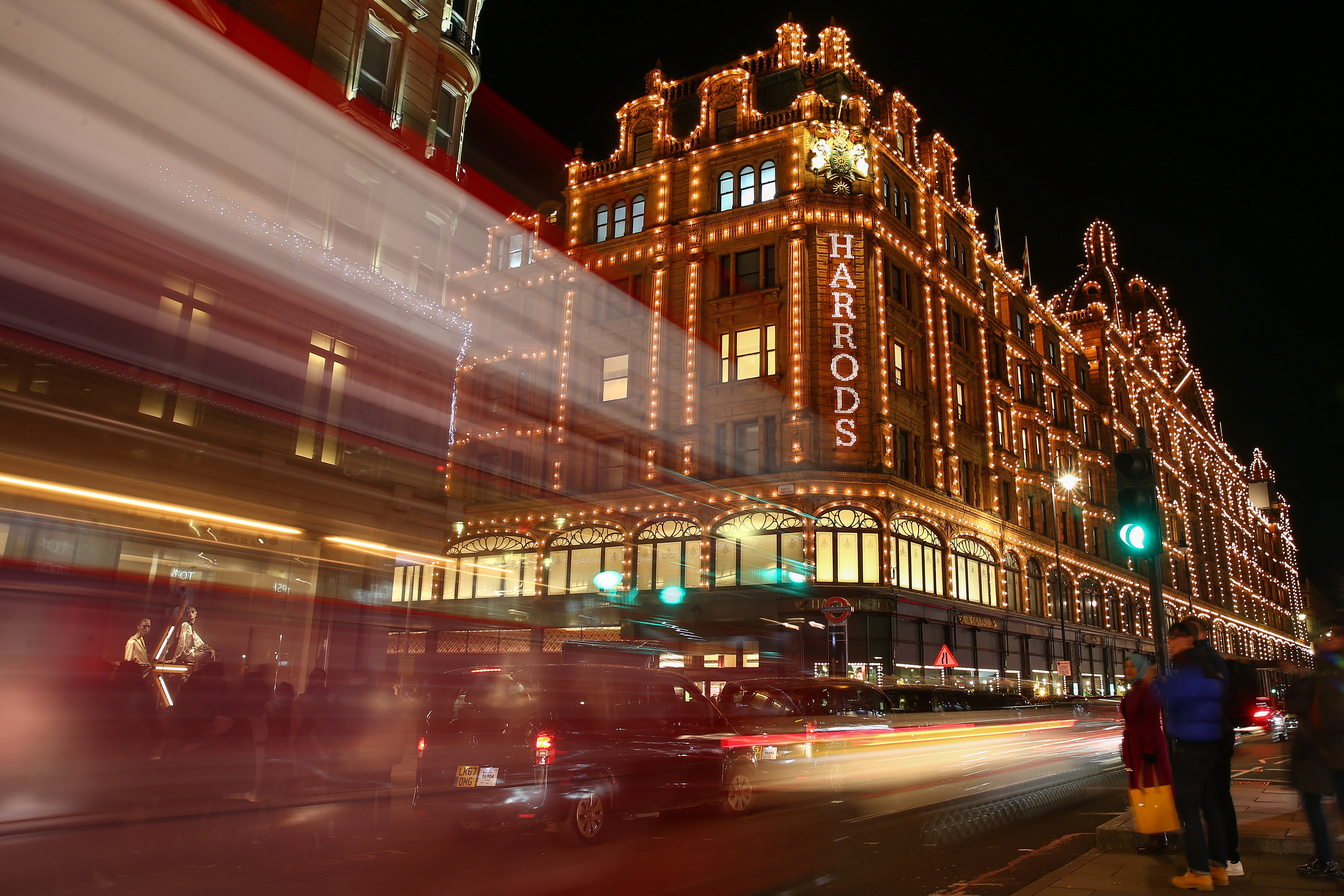What is wrong (and right) with the high street this Christmas?
I visited three different department stores in London, and each told a different story about the high street, writes Chris Blackhurst


On the same day that the Weston family were putting the final touches to their sale of Selfridges to Thailand’s Central Group for £4bn, I was in London’s West End.
Shopping for a present, I did a quick tour of Selfridges, Harvey Nichols and Harrods. Which one was busy, which was quiet and which was empty? Harrods was heaving, throughout the store, not just the ground floor. Selfridges was reasonably buzzing in parts but devoid of customers in others. Harvey Nichols was forlorn, with plenty of assistants standing round and barely a shopper in sight.
It wasn’t an exact experiment, but it wasn’t bad either. The whole visit lasted just an hour and did not straddle lunchtime, so the fact there were crowds in Harrods, the last one I saw, can’t be explained by a sudden exodus of workers from their offices – and besides, there aren’t too many of those these days, which is part of the problem.
As a study in what is wrong with the high street and where it needs to head to survive and possibly, thrive, it was indicative. Harrods was packed because it is, well, Harrods.
There is only one and nothing else comes close. It’s a destination in its own right, in a way that other shops simply are not. In size, range of goods on offer, attention to detail, lavish fittings, Harrods is head and shoulders above anything else. In designer goods, there are boutiques that can match its luxury. Likewise, in food, Fortnum & Mason is its extravagant equivalent. But in Knightsbridge, Harrods houses the most upmarket clothes alongside opulent foods and so much more, all under one domed roof.
Selfridges tries hard and it’s gone all out to appeal to a younger, more contemporary market. It’s funky, which is a word you would never use about Harrods. But in places, Selfridges can seem out of control, a mishmash on the eye and ear. Not all its cutting-edge projects work.
Harrods and to a lesser extent, Selfridges, illustrate how to get the footfall, how to persuade consumers to leave their computer and mobile screens
Of the trio of London, and the UK’s most glamorous retailing trophies, Selfridges is mine and my teenage children’s shop of choice. It’s vibrant and exciting. Ah, but is it worth £4bn? For that, admittedly, the buyers are getting 25 stores worldwide, including Brown Thomas and Arnotts in Dublin, De Bijenkorf in the Netherlands and Holt Renfrew in Canada. The flagship, though, is the eponymous Oxford Street store.
With the Thai bosses will come Vittorio Radice, who ran Selfridges more than two decades ago, before going on to try his hand, and fail, at Marks & Spencer. Radice, 64, is a director of Central Group with responsibility for implementing the company’s European expansion. It was Radice who injected much of the pizazz that is still evident in Selfridges today.
Can he repeat the magic second time round, with that price burden hanging over him? Around £2bn or half that cost can be accounted for by Selfridges’ property portfolio – the Westons own the freehold on the Oxford Street colossus as well as other buildings. Even so, the pure retailing side fetched £2bn.
Harrods, and to a lesser extent Selfridges, illustrate how to get the footfall, how to persuade consumers to leave their computer and mobile screens (they both have successful online operations), to journey to a bricks and mortar shop and to part with their cash. They’ve achieved it by supplying an experience, in making the customer feel loved and wanted, in creating a show.

That’s more easily said and done when the outlet is Harrods or Selfridges and they’re based in the tourist mecca of London. Bear in mind, though, that their outlays are so much higher.
Alas, Harvey Nichols, owned by Hong Kong-based tycoon, Sir Dickson Poon, has fallen away. Its premises feel cramped, the ceilings are low, the lighting is bright and poor. The shop has a tired look – even the always eye-grabbing window display seems drab.
Gone are the days when it was “Harvey Nicks”, beloved haunt of Edina and Patsy in Absolutely Fabulous, and Princess Diana. Then, it was the “go to” store, the haunt of fashionistas, smack bang on the money, right at the forefront of cool.
While the much bigger neighbour, Harrods, has sailed on, imperious, like an enormous cruise liner, albeit one propped up by Qatari financial might, and Selfridges has continued to innovate and push boundaries, Harvey Nichols has remained stuck. It was when Selfridges was being transformed by Radice that Harvey Nichols was enjoying a similar makeover, under its then creative director, Mary Portas.
It was Portas who made it risqué, putting on outré events and teaming with up-and-coming designers. Under her, Harvey Nichols appeared more grown up, a shop for serious, sophisticated adults. The top floor restaurant was foodie heaven. It did not seem so the other day. Even its new Benjamin’s Bar, stocking over 100 whiskies, felt out of touch – more smart golf club than world-beating magnet.
What Harvey Nichols urgently requires is a facelift. Whether Poon has the appetite for such an expense remains to be seen. London’s tourism traffic has been decimated by the pandemic. When it picks up again, as it surely must, will Harvey Nichols be on international travellers’ lists? Will it be under new ownership? God forbid, could it have gone under and vanished completely? Because something must change and if not, then…
Right now, Harvey Nichols does not stand comparison with its two great rivals. Lustrous has given way to lacklustre and that could prove fatal.
Join our commenting forum
Join thought-provoking conversations, follow other Independent readers and see their replies
Comments



Bookmark popover
Removed from bookmarks